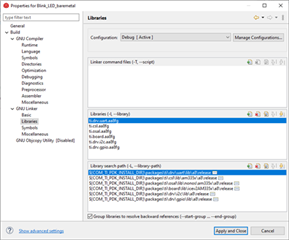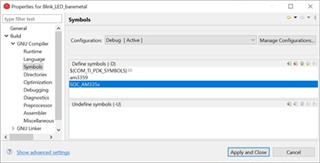I'm developing a bare-metal (no SYS/BIOS or TI-ROTS) application based on the AM335x/AM437x PDK. How can I get started with a CCS project?
-
Ask a related question
What is a related question?A related question is a question created from another question. When the related question is created, it will be automatically linked to the original question.








